Tell me about British Leyland
Discussion
What I don’t understand is why Rover persisted with giving cars numbers instead of names. It’s basically a conceit that the brand name tells you what the car is like and the specific model is a secondary consideration. BMW Merc and Audi just about get away with it but you need a strong and preferably aspirational brand identity which Rover no longer had by the post BL stage. They would have been better off doing what Ford does and giving the cars distinct identities in their own right. The Metro was assessed on it’s merits despite the appalling image of BL because nobody called it an Austin Metro or a BL Metro, just a Metro. Calling it a Rover Metro or a Rover 100 just seemed contrived. Call the Rover 75 a Rover Sterling or something and the Rover image would be less of an issue.
ChilliWhizz said:
If only they'd given more thought to the BGT V8... The oil crises and focus on the TR7 (with American market potential) killed it off 
Great article about them here... http://www.classicandsportscar.com/news/csc-featur...
I had mine for about three years, and enjoyed every minute of it... Easy to work on, practical, easy to drive, and great fun, although it was a thirsty little beast... I really shouldn't have sold it, but a TVR beckoned...
Here's a few pics..
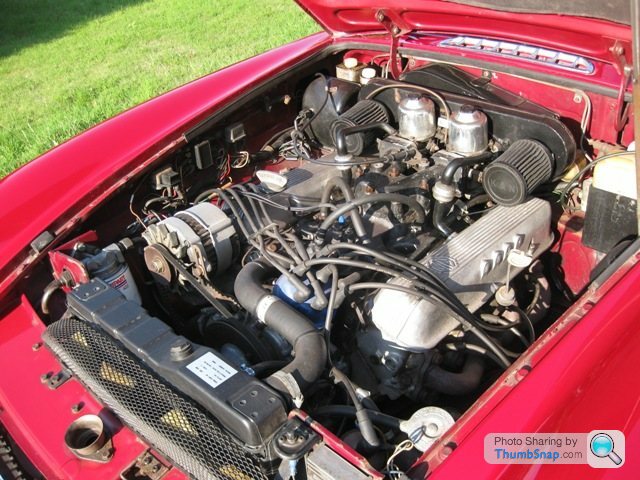
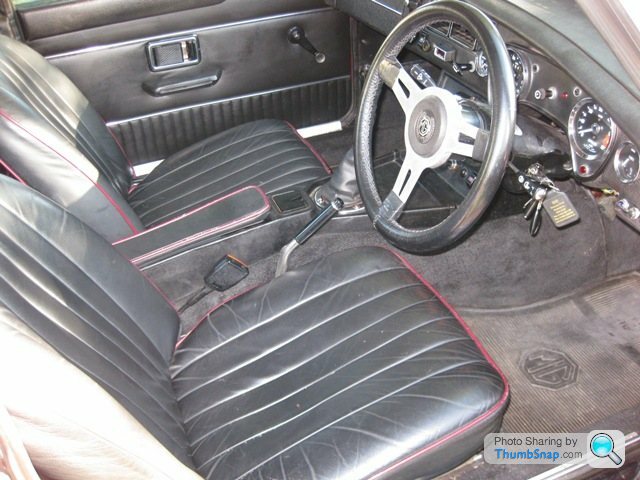
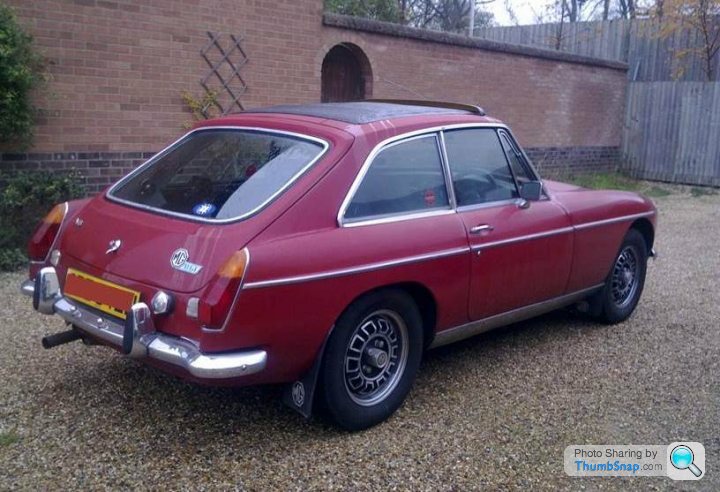

Your car shows a unique 1970s BL feature- the badge- whether the engine cc, the number of cylinders or the Leyland emblem- on the passenger side wing only with none on the driver’s side. The idea was only people being overtaken needed to see that........
Great article about them here... http://www.classicandsportscar.com/news/csc-featur...
I had mine for about three years, and enjoyed every minute of it... Easy to work on, practical, easy to drive, and great fun, although it was a thirsty little beast... I really shouldn't have sold it, but a TVR beckoned...
Here's a few pics..




Edited by ChilliWhizz on Wednesday 21st February 11:11
Edited by dickew on Saturday 10th March 16:30
Wozy68 said:
A fella I work with used to be a professional photographer back in the Seventies and Eighties.
He accepted a commission where he had to go up to the West Midlands and photograph a piece of machinery being used that had just been installed in a Leyland factory. This was around the mid late Sevrnties.
He arrived at the gate, car laden with photography gear. That was as far as his car was going to get, as the gateman point blank refused to allow his foreign made car in to the site. (I believe it was an Opel).
So there he is, car parked outside this massive place unable to move his large amount of kit.
He sees a trolly just inside the gates, grabs it and starts loading his kit on to it. The gateman comes over and tells him under no circumstances is he to push the trolly into the works as that’s a trollymans job, so he waits 30 minutes for a guy to turn up and eventually off they go to find the new machine he's there to photograph.
Finally finding the machine, he asks the guy using it if it was all ok to photograph it. Sets up his camera and whilst the machine is working starts taking photographs.
After about five minutes, a shop floor worker comes over and asks what he’s doing, he explains everything to him and off the fella goes.
Five minutes after that, the union shop steward and his underlings turns up and demands he stops photographing the machine. My mate informed them what he was doing, that he had all the right permissions to do so and that the photographs were purely for a sales brochure.
They didn’t believe a word of it, thinking it’s some kind of management dirty tricks, time and motion study.
Off they go, within five minutes senior management are on the shop floor demanding he pack all his gear away and vacate the factory immediately.
Because of him just trying to photograph a British built machine in a British factory, the shop steward threatened to call a strike if he carried on, so he had to leave.
Yep. BL had a policy, only BL products cold be parked on BL sitesHe accepted a commission where he had to go up to the West Midlands and photograph a piece of machinery being used that had just been installed in a Leyland factory. This was around the mid late Sevrnties.
He arrived at the gate, car laden with photography gear. That was as far as his car was going to get, as the gateman point blank refused to allow his foreign made car in to the site. (I believe it was an Opel).
So there he is, car parked outside this massive place unable to move his large amount of kit.
He sees a trolly just inside the gates, grabs it and starts loading his kit on to it. The gateman comes over and tells him under no circumstances is he to push the trolly into the works as that’s a trollymans job, so he waits 30 minutes for a guy to turn up and eventually off they go to find the new machine he's there to photograph.
Finally finding the machine, he asks the guy using it if it was all ok to photograph it. Sets up his camera and whilst the machine is working starts taking photographs.
After about five minutes, a shop floor worker comes over and asks what he’s doing, he explains everything to him and off the fella goes.
Five minutes after that, the union shop steward and his underlings turns up and demands he stops photographing the machine. My mate informed them what he was doing, that he had all the right permissions to do so and that the photographs were purely for a sales brochure.
They didn’t believe a word of it, thinking it’s some kind of management dirty tricks, time and motion study.
Off they go, within five minutes senior management are on the shop floor demanding he pack all his gear away and vacate the factory immediately.
Because of him just trying to photograph a British built machine in a British factory, the shop steward threatened to call a strike if he carried on, so he had to leave.
morgrp said:
See to me the principle reason the 75 failed was not because of it's engineering but because of the ridiculous identity they gave it.
The whole wood and leather, retro, british thing was a complete mistake. Granted the MG models tried to redress this problem but it was a sticking plaster on an already wrecked brand image.
Frankly, looking at how fresh and modern some of their concept cars were Rover were idiots for going down the retro route with the 75 given their heritage was one of very modern often advanced vehicles - see the Rover P6 and SD1 etc.
You may hate him, but Jeremy Clarkson summed it up well by saying "putting these traditional British retro cream dials and all this wood in a Rover is the same as fitting an Onion Holder to the Dash of a Renault because it's French"
The 75 was a German interpretation of what they thought Britain was all about. It really should have been a viable contender for the BMW 3 series but lets be honest, BMW were never going to let that happen were they?
That's what made the 75 unique though. Rover pulled off the retro thing far better than the laughable efforts of Ford with the S and X Tripe Jags. The 75 sold well in Europe apparently and time has proven that it was a far better built car than the E46 3 Series - a shocking rust bucket.The whole wood and leather, retro, british thing was a complete mistake. Granted the MG models tried to redress this problem but it was a sticking plaster on an already wrecked brand image.
Frankly, looking at how fresh and modern some of their concept cars were Rover were idiots for going down the retro route with the 75 given their heritage was one of very modern often advanced vehicles - see the Rover P6 and SD1 etc.
You may hate him, but Jeremy Clarkson summed it up well by saying "putting these traditional British retro cream dials and all this wood in a Rover is the same as fitting an Onion Holder to the Dash of a Renault because it's French"
The 75 was a German interpretation of what they thought Britain was all about. It really should have been a viable contender for the BMW 3 series but lets be honest, BMW were never going to let that happen were they?
As was said earlier, Rover were on the right path and on the verge of making a range of half decent cars. Once they'd got rid of the 25/45 crap and replaced it with something modern...............and the Z4 Coupe would have been tremendous if it were badged as a Triumph, thus reviving another viable brand. So many opportunities lay ahead for BMW and they royally f
 ked it all up. Christ, to be able to rehash a recently discontinued floorpan, slap an Austin badge on and sell it for £5995 to undercut the Koreans and do a Dacia. Two big factories flat out making a million or two cars a year.
ked it all up. Christ, to be able to rehash a recently discontinued floorpan, slap an Austin badge on and sell it for £5995 to undercut the Koreans and do a Dacia. Two big factories flat out making a million or two cars a year.Oh well.
Dr Jekyll said:
What I don’t understand is why Rover persisted with giving cars numbers instead of names. It’s basically a conceit that the brand name tells you what the car is like and the specific model is a secondary consideration. BMW Merc and Audi just about get away with it but you need a strong and preferably aspirational brand identity which Rover no longer had by the post BL stage. They would have been better off doing what Ford does and giving the cars distinct identities in their own right. The Metro was assessed on it’s merits despite the appalling image of BL because nobody called it an Austin Metro or a BL Metro, just a Metro. Calling it a Rover Metro or a Rover 100 just seemed contrived. Call the Rover 75 a Rover Sterling or something and the Rover image would be less of an issue.
Back in the 90s alfa, audi, volvo, renault, peugeot, to name a few from the top of my head who also used numbers for car models. Rover always had, so it made sense to continue. Sterling, vitesse ets were trim levels. iSore said:
That's what made the 75 unique though. Rover pulled off the retro thing far better than the laughable efforts of Ford with the S and X Tripe Jags. The 75 sold well in Europe apparently and time has proven that it was a far better built car than the E46 3 Series - a shocking rust bucket.
As was said earlier, Rover were on the right path and on the verge of making a range of half decent cars. Once they'd got rid of the 25/45 crap and replaced it with something modern...............and the Z4 Coupe would have been tremendous if it were badged as a Triumph, thus reviving another viable brand. So many opportunities lay ahead for BMW and they royally f ked it all up. Christ, to be able to rehash a recently discontinued floorpan, slap an Austin badge on and sell it for £5995 to undercut the Koreans and do a Dacia. Two big factories flat out making a million or two cars a year.
ked it all up. Christ, to be able to rehash a recently discontinued floorpan, slap an Austin badge on and sell it for £5995 to undercut the Koreans and do a Dacia. Two big factories flat out making a million or two cars a year.
Oh well.
I never looked twice at the 75, looked like an 'old mans car', deeply dull on the face of things. The image was just all wrong. IMO that'w where they went wrong.As was said earlier, Rover were on the right path and on the verge of making a range of half decent cars. Once they'd got rid of the 25/45 crap and replaced it with something modern...............and the Z4 Coupe would have been tremendous if it were badged as a Triumph, thus reviving another viable brand. So many opportunities lay ahead for BMW and they royally f
 ked it all up. Christ, to be able to rehash a recently discontinued floorpan, slap an Austin badge on and sell it for £5995 to undercut the Koreans and do a Dacia. Two big factories flat out making a million or two cars a year.
ked it all up. Christ, to be able to rehash a recently discontinued floorpan, slap an Austin badge on and sell it for £5995 to undercut the Koreans and do a Dacia. Two big factories flat out making a million or two cars a year.Oh well.
sideways man said:
Very interesting and informative thread regarding the union and BL working practices.
So, Sir Michael Edwards book 'Back From The Brink', is it worth a read?
Currently on amazon for £1.73....
Yes definitely. Lots of interesting details, albeit not much about the cars and not the easiest to read.So, Sir Michael Edwards book 'Back From The Brink', is it worth a read?
Currently on amazon for £1.73....
My Dad got an Austin Princess 2200 as a company when they first came out. As he was driving it home following collection, he rolled down the (electric) drivers side window, after which it refused to go back up... straight back to the dealer with probably less than 6 miles on it...
Pedant alert. - I think electric windows on a princess 2200 would have been aftermarket
Pedant alert. - I think electric windows on a princess 2200 would have been aftermarket
sideways man said:
Very interesting and informative thread regarding the union and BL working practices.
So, Sir Michael Edwards book 'Back From The Brink', is it worth a read?
Currently on amazon for £1.73....
I'd ask around a bit more, you don't want to be throwing £1.73 down the drain for nothing.So, Sir Michael Edwards book 'Back From The Brink', is it worth a read?
Currently on amazon for £1.73....
A big problem with BL was that any constituent company within the BL 'umbrella' that was profitable, like say Rover or Jaguar would see any profits they made, that could be used to fund model improvements and new vehicle designs siphoned off to prop up the rest of the holdings.
So we have for example a 1970 Land Rover, from when Rover joined BL
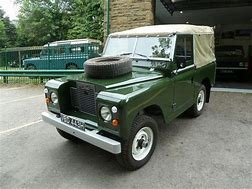
Compare and contrast with the equivalent model 13 years later, shortly before it was replaced.
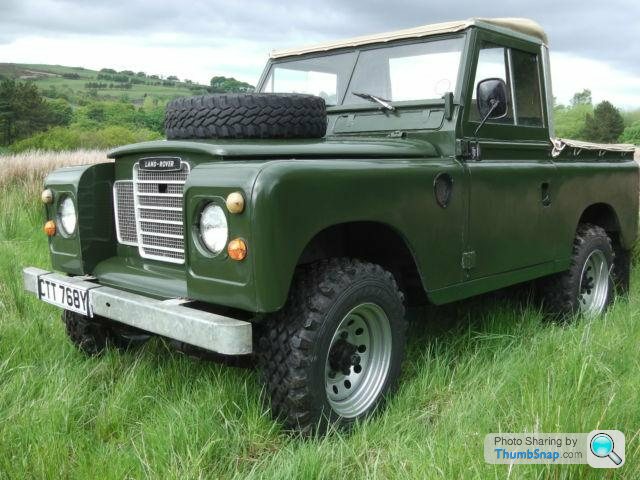
The build quality deteriorated massively during this period too.
So we have for example a 1970 Land Rover, from when Rover joined BL

Compare and contrast with the equivalent model 13 years later, shortly before it was replaced.

The build quality deteriorated massively during this period too.
Both my dad and my brother worked for a company that made castings for
BL. Nobody cared about quality.
An example , the temperature for the sand used in the process needed to be monitored / recorded. The doing this job just estimated the figures for the shift and read his books all day
BL. Nobody cared about quality.
An example , the temperature for the sand used in the process needed to be monitored / recorded. The doing this job just estimated the figures for the shift and read his books all day
Sorry for the slight thread resurrection - I was rereading it to try and find an anecdote and then kept reading it past the point I last left. Anyway:
They also suffered from the BL disease of neglecting profitable and popular models (because when you have limited resources and declining market share why waste money on a product that's doing fine as it is) to the point that they become unpopular and old-fashioned. The Range Rover was on sale for a nearly a decade before it got a five-speed gearbox, a four-door body and standard-fit power steering, while the LR Series III was, as you point out, completely neglected.
Michael Edwardes changed things up by forming Land Rover Ltd as its own business within BL in 1979 and giving it £250 million of money to spend on model development, which is why between 1979 and 1983 you get a sudden rush of modernisations. The SIII gets five-bearing engines, stronger gearboxes and uprated axles, plus improved brakes and new bodies such as the HiCap and County. The old Rover IOE straight-six is replaced by the Rover V8 with the RR's drivetrain, the RR gets moved upmarket and those long-overdue improvements and then the coil-sprung Land Rover gets launched between 1983 and 1985.
The same problem affected MG, mostly due to the biase of the Leyland management. While Triumph was put into the Specialist Division MG (which was, if anything, even more specialist than Triumph) was kept as part of Austin-Morris, which was the real financial black hole. So as A-M flailed around with the Maxi, Marina and Allegro and ever-declining market share MG was left to wither. In 1970 it had been calculated that MG was the third most commercially valuable brand in the word, in any sector (not just automotive), mostly on the back of its North American sales. BL completely neglected MG - with the exception of the limited-run 'B GT V8 not a single new MG was launched during the 1970s. MG's entire forward-product plan was hitched to Austin-Morris car development, so for instance MG badly wanted a new modern engine to replace the B-Series and meet the Federal emissions laws. BL dragged its feet, despite the fact that the lack of such an power unit was standing in the way of major sales increases of sports cars in America, which was one of the few bits of BL which was actually making money. When A-M did begin development of such an engine (which eventually became the O-Series) MG was told it was firmly in the back of the queue and that it wouldn't get its hands on the new engine until it had been in the Marina and the Princess for several years. And while BL wasted millions on giving the Marina a backwards dashboard or giving the Princess two press launches in the same year, MG had about £6.35p to slap some rubber bumpers on the 'B and Midget and stick some blocks under the suspension to bodge them through the 1975 safety regs. And MG never got permission to use the O-Series engine.
Jaguar was a rather different case because William Lyons (astutely) insisted that Jaguar Cars remained operationally and financially independent from BL. So it wasn't a case that Jaguar's profits were being siphoned off to prop up Austin-Morris, more that in the wake of the Energy Crisis and with declining build quality Jaguar simple wasn't making any money. Until John Egan turned it around Jaguar was in every real danger of collapsing.
warch said:
A big problem with BL was that any constituent company within the BL 'umbrella' that was profitable, like say Rover or Jaguar would see any profits they made, that could be used to fund model improvements and new vehicle designs siphoned off to prop up the rest of the holdings.
So we have for example a 1970 Land Rover, from when Rover joined BL

Compare and contrast with the equivalent model 13 years later, shortly before it was replaced.

The build quality deteriorated massively during this period too.
This was really only applicable to the Land Rover and Range Rover specifically, because they were simply Rover products rather than being marques in their own right. So they were built by the 'Specialist Division' of BL which also handled Jaguar, Rover and Triumph which made marketing roughty-toughty commercial 4x4s to fleet users in sub-Saharan Africa or managing CKD build operations a very minority interest in the Division's management. When Rover was chucking tens of millions of pounds away on the SD1 project any revenue from the 4x4s simple disappeared into the 'Rover' black hole. So we have for example a 1970 Land Rover, from when Rover joined BL

Compare and contrast with the equivalent model 13 years later, shortly before it was replaced.

The build quality deteriorated massively during this period too.
They also suffered from the BL disease of neglecting profitable and popular models (because when you have limited resources and declining market share why waste money on a product that's doing fine as it is) to the point that they become unpopular and old-fashioned. The Range Rover was on sale for a nearly a decade before it got a five-speed gearbox, a four-door body and standard-fit power steering, while the LR Series III was, as you point out, completely neglected.
Michael Edwardes changed things up by forming Land Rover Ltd as its own business within BL in 1979 and giving it £250 million of money to spend on model development, which is why between 1979 and 1983 you get a sudden rush of modernisations. The SIII gets five-bearing engines, stronger gearboxes and uprated axles, plus improved brakes and new bodies such as the HiCap and County. The old Rover IOE straight-six is replaced by the Rover V8 with the RR's drivetrain, the RR gets moved upmarket and those long-overdue improvements and then the coil-sprung Land Rover gets launched between 1983 and 1985.
The same problem affected MG, mostly due to the biase of the Leyland management. While Triumph was put into the Specialist Division MG (which was, if anything, even more specialist than Triumph) was kept as part of Austin-Morris, which was the real financial black hole. So as A-M flailed around with the Maxi, Marina and Allegro and ever-declining market share MG was left to wither. In 1970 it had been calculated that MG was the third most commercially valuable brand in the word, in any sector (not just automotive), mostly on the back of its North American sales. BL completely neglected MG - with the exception of the limited-run 'B GT V8 not a single new MG was launched during the 1970s. MG's entire forward-product plan was hitched to Austin-Morris car development, so for instance MG badly wanted a new modern engine to replace the B-Series and meet the Federal emissions laws. BL dragged its feet, despite the fact that the lack of such an power unit was standing in the way of major sales increases of sports cars in America, which was one of the few bits of BL which was actually making money. When A-M did begin development of such an engine (which eventually became the O-Series) MG was told it was firmly in the back of the queue and that it wouldn't get its hands on the new engine until it had been in the Marina and the Princess for several years. And while BL wasted millions on giving the Marina a backwards dashboard or giving the Princess two press launches in the same year, MG had about £6.35p to slap some rubber bumpers on the 'B and Midget and stick some blocks under the suspension to bodge them through the 1975 safety regs. And MG never got permission to use the O-Series engine.
Jaguar was a rather different case because William Lyons (astutely) insisted that Jaguar Cars remained operationally and financially independent from BL. So it wasn't a case that Jaguar's profits were being siphoned off to prop up Austin-Morris, more that in the wake of the Energy Crisis and with declining build quality Jaguar simple wasn't making any money. Until John Egan turned it around Jaguar was in every real danger of collapsing.
In hindsight, Edwardes should have closed Austin Morris in 1977. Nothing that came after that (Maestro etc) made any proper money. Jaguar production could have been moved to Longbridge (Harold Musgrove offered this solution to Egan) along with Triumph. It's a pity the TR7 was axed early, just as it was becoming a decent car. The late 2.0 Convertible was a good car and increasingly popular.
Jaguar, Rover, MG, Triumph and investment in all including the Sherpa van - you forget how popular they were at the time. the whole Metro/Maestro/Montego thing was a complete dead end as they just weren't good enough (as usual). Ford and GM did that sort of thing so much better as the market soon proved.
Edwards and Mrs Thatcher didn't get on at all - she wanted the whole lot off her hands and rightly so.
Jaguar, Rover, MG, Triumph and investment in all including the Sherpa van - you forget how popular they were at the time. the whole Metro/Maestro/Montego thing was a complete dead end as they just weren't good enough (as usual). Ford and GM did that sort of thing so much better as the market soon proved.
Edwards and Mrs Thatcher didn't get on at all - she wanted the whole lot off her hands and rightly so.
Politics had a lot to do with things. I worked for a software company with a large Swedish presence in the late 90's, early 2000's. When the tech bubble burst, the business had to do a lot of restructuring and ended up laying off 2/3 of it's workforce. I remember hearing that the they were prevented from restructuring in Sweden because of the laws so their only option was to pull out of the country completely which they did. When GM was in trouble in 2008, I suspected that the same fate would happen to Saab and it did.
Gassing Station | Classic Cars and Yesterday's Heroes | Top of Page | What's New | My Stuff



